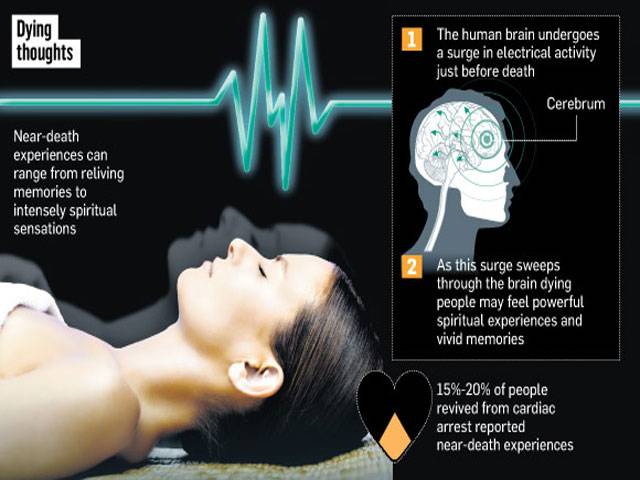MICHIGAN, US
BBC
A surge of electrical activity in the brain could be responsible for the vivid experiences described by near-death survivors, scientists report.
A study carried out on dying rats found high levels of brainwaves at the point of the animals’ demise.
US researchers said that in humans this could give rise to a heightened state of consciousness. The research is published in the Proceedings of the National Academy of Sciences.
The lead author of the study, Dr Jimo Borjigin, of the University of Michigan, said: “A lot of people thought that the brain after clinical death was inactive or hypoactive, with less activity than the waking state, and we show that is definitely not the case. “If anything, it is much more active during the dying process than even the waking state.”
From bright white lights to out-of-body sensations and feelings of life flashing before their eyes, the experiences reported by people who have come close to death but survived are common the world over.
However, studying this in humans is a challenge, and these visions are little understood.
To find out more, scientists at the University of Michigan monitored nine rats as they were dying.
In the 30-second period after the animal’s hearts stopped beating, they measured a sharp increase in high-frequency brainwaves called gamma oscillations.
These pulses are one of the neuronal features that are thought to underpin consciousness in humans, especially when they help to “link” information from different parts of the brain. In the rats, these electrical pulses were found at even higher levels just after the cardiac arrest than when animals were awake and well.
Dr Borjigin said it was feasible that the same thing would happen in the human brain, and that an elevated level of brain activity and consciousness could give rise to near-death visions.
Wednesday, April 17, 2024
Near-death experiences explained

British investment group to launch $35m second development at Cedar Hills
3:04 PM | April 17, 2024
Tortured body finally identified as lady journalist
April 17, 2024
Police apprehend seven outlaws, recover valuables
April 17, 2024
Training on AI in teaching practices kicks off in AIOU
April 17, 2024
DIG Operations conducts night inspections in Islamabad
April 17, 2024
Rail Revival
April 17, 2024
Addressing Climate Change
April 17, 2024
Saudi Investment
April 17, 2024
Political Reconciliation
April 16, 2024
Pricing Pressures
April 16, 2024
Workforce inequality
April 17, 2024
New partnerships
April 17, 2024
Shikarpur crisis
April 17, 2024
Peace quest
April 17, 2024
Democratic harmony
April 16, 2024
ePaper - Nawaiwaqt
Advertisement
Nawaiwaqt Group | Copyright © 2024





